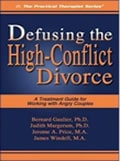
The fourth pattern you are likely to see among high-conflict co-parents is the substance-abusing parent. In fact, the role of substance abuse — or at least frequent accusations of substance abuse — is a recurrent theme in the conflicts reported by high-conflict couples (Johnston and Campbell, 1988). Some researchers have found that pervasive mistrust about the other parent’s ability to care for the children adequately is one of the primary features of high-conflict as opposed to low-conflict divorces (Maccoby and Mnookin, 1992).
A study published in the Family and Conciliation Court Review of 1,669 mediation sessions conducted in California family courts found that parents expressed serious concerns about their co-parent’s ability to parent. Although the greatest concerns related to child neglect and physical or sexual abuse, thirty-six percent of these parents had serious doubts about the other parent because of substance abuse (Depner et al., 1992).
Unfortunately, there have not been adequate studies of either the extent of substance abuse or the extent of emotional or personality dysfunction of people involved in high-conflict divorce. Early research from the 1980s did suggest that co-parents involved in high conflict following divorce were more likely to have severe psychopathology, personality disorders, and domestic abuse problems (Hauser, 1985; Kressel, Jaffe, N., et al., 1980). These studies further indicated that about one-fourth of the high-conflict parents studied may have had substance abuse problems. At about the same time, a self-report study indicated that the use of alcohol and drugs by high-conflict couples may not differ from that in the general population, which is usually estimated at about ten percent (Derogatis and Spencer, 1982).
According to Wallerstein and Kelly (1980), based on their studies of divorced parents, about twenty percent of noncustodial parents, usually fathers, are significantly dysfunctional. This dysfunction may include physical abuse, serious emotional illness, or alcohol and drug abuse.
We see no question, based on our experience, that there are many dysfunctional co-parents who are involved in high-conflict divorces. There is also no question that a certain number of high-conflict co-parents are substance abusers. The numbers, however, may be both underreported and overreported. We are aware that this is contradictory. However, it is difficult to adequately estimate the number of substance abusers in high-conflict treatment programs for two reasons. Substance abuse gets underreported during some marriages because it’s likely that both parents were abusing substances. This leads to a tacit code of silence after the marriage has ended. Neither co-parent is willing to talk openly about the other’s substance abuse (even though they may be hurling other accusations back and forth) because if he reports her substance abuse, she is likely to retaliate by talking about his substance abuse.
The second reason, related to overreporting, is that an accusation of substance abuse is a way for an angry co-parent to exact revenge or discharge hostility toward her co-parent. It is very difficult for the clinician to arrive at an accurate picture of how much substance abuse is actually going on, because one parent may have a great deal invested in portraying her co-parent in the worst possible light. By claiming that the other parent is unfit or poses a substantial safety risk to the children she can “get even” with her co-parent for perceived injustices. Although in reality the level of alcohol or drug use has not increased, a parent may use this to try to reduce the other’s parenting time or to gain physical custody.
 From Defusing the High-Conflict Divorce © 2007 by Bernard Gaulier, Judith Margerum, Jerome A. Price, and James Windell. Reproduced for DivorceMagazine.com by permission of Impact Publishers, P.O. Box 6016, Atascadero, CA 93423-6016, U.S.A., Click www.ImpactPublishers.com for more information about this book and its authors. Further reproduction prohibited
From Defusing the High-Conflict Divorce © 2007 by Bernard Gaulier, Judith Margerum, Jerome A. Price, and James Windell. Reproduced for DivorceMagazine.com by permission of Impact Publishers, P.O. Box 6016, Atascadero, CA 93423-6016, U.S.A., Click www.ImpactPublishers.com for more information about this book and its authors. Further reproduction prohibited
More Articles from Defusing the High-Conflict Divorce:











Add A Comment